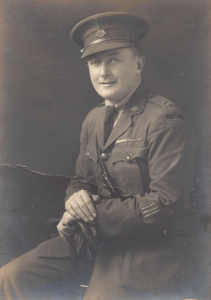
AN INCREDIBLE STORY; AN INCREDIBLE SOLDIER
The place was the Menin Road in Belgium and the date was September 20 1917. Men of the 10th South Australian Battalion had been involved in heavy fighting at Polygon Wood since before dawn; just before 8am they had paused before the next attack was to take place. A large artillery barrage was flying overhead and the men were huddled in shell holes nervously awaiting orders for the advance to continue.
Tensions were extremely high when suddenly the latest editions of English newspapers and sandwiches appeared and were distributed to the men crouched in their shell holes. They ate sandwiches and read their newspapers before going on to capture the next objective.
This distribution of sandwiches and newspapers to the forward troops was organised by the brilliant and unorthodox commanding officer of the 10th Battalion, Lieutenant Colonel Maurice Wilder Neligan.
Neligan was a mercurial and eccentric Englishman who joined the Australian Army as a Private soldier at the beginning of the First World War, lying about his identity, age and birthplace.
He landed with the 9th battalion at Gallipoli on 25 April 1915 and was both decorated for gallantry, and commissioned as an officer, a few days later. He went on to command the 9th and 10th Battalions and was one of the most decorated ANZACs of World War One. He was almost killed on one occasion in 1916 and spent many months recovering in an English hospital from serious head wounds, before returning to the front.
Numerous stories surrounded the true identity of this mysterious individual, such as his background, wealth, family connections and previous service in the British Army. He did little to dispel the myths that followed him wherever he went.
He died in unusual circumstances in New Guinea in 1923 and he lays buried in a lonely grave on the Island of New Britain. He has been largely forgotten by history and very few Australians would recognise his name today.
Yet this individual was literally adored by the troops who served under him and he was rightly regarded as one of Australia’s best battalion commanders. This was a view shared by both the men with whom he served, and his superior officers.
For the first time the story of this incredible individual is revealed. He is somebody who should be remembered as one of Australia’s greatest soldiers.